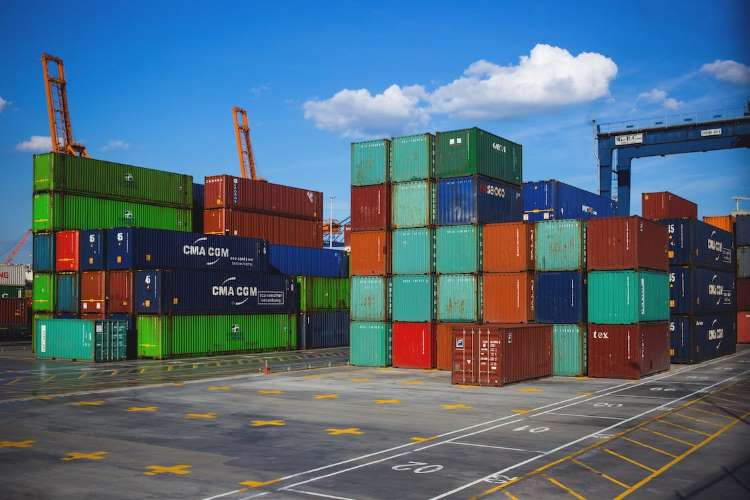
I am delighted to share with you the findings of our comprehensive study that has spanned several years, culminating in a deep exploration of trade facilitation. Our research has evolved into an extensive examination of trade processes. We have persevered through the years, striving to address a myriad of questions that have guided our study. In the following discourse, I will elaborate on our discoveries, shed light on the factors that have contributed to our progress, and outline potential directions for the future.
Our study revolves around the concept of trade facilitation, with a particular focus on the measurement of trade time and trade tying. We have extracted data from custom automated systems, which have digitized the cargo clearance process, making it possible to gauge trade time accurately. Additionally, RFID trackers embedded in containers offer insights into the duration of their presence within the port ecosystem.
While some studies have relied on perception-based or survey-based approaches, such as the World Bank’s Logistics Performance Index (LPI), we have delved into more precise data. Despite various indicators being available, certain limitations, including restricted access to government-held data, hindered comprehensive international comparisons.
READ I Non-tariff barriers weigh on India’s $1 trillion exports goal
Trade facilitation and exports
In India, we also conducted an annual Time Release Study (TRS) based on samples from documents like the Bill of Entry and Shipping Bill, which are filed for imports and exports, respectively. Over time, this study expanded its scope to cover 15 ports, encompassing various modes of transport, including Seaports, Inland Container Depots (ICDs), Air Cargo, and Land Ports, each serving distinct geographical regions. We have presented these findings in different formats, such as the Monthly Dwell Time Report and the more real-time Ice-DASH, capturing varying aspects of trade time.
As we embarked on this journey, we aimed to establish a baseline benchmark for trade time. We traced back to the earliest study in 2010-11, as reported by the Controller and Auditor General, which indicated an average release time of nearly 14 days. This figure, however, required nuanced interpretation to provide meaningful insights for policymaking. Our subsequent studies, spanning from 2013 to 2023, sought to gain a deeper understanding of trade time dynamics.
Our research revealed a significant reduction in import release time at the Navasheva Seaport, from an average of 181 hours in 2017 to 2023’s 98 hours. Comparatively, the Inland Container Depots and the Air Cargo Complex exhibited more moderate reductions. We also highlighted the unique challenges faced in measuring trade time for exports, emphasizing that the regulatory clearance and infrastructural time pose distinct hurdles. The variance between land and seaports was striking, uncovering insights into the interplay of factors impacting trade time.
Our study led us to identify key drivers that influence trade time. We found that pre-arrival processing, facilitation measures, Authorized Economic Operator (AEO) status, and the implementation of a digital single window platform significantly expedite cargo clearance. In particular, the integration of these measures led to a remarkable 50% reduction in average release time at seaports. This progress, while impressive, necessitates collaborative efforts between stakeholders, including importers, Customs, and regulatory bodies.
Nonetheless, challenges remain, with bottlenecks such as Duty payment, amendment processing, and cargo storage persisting as impediments. Furthermore, our analysis exposed the unexpected delay in cargo movement post-clearance, particularly within Container Freight Stations (CFS). This prompted us to emphasize the need for comprehensive supply chain optimization, transcending Customs operations.
Our journey from 2015 to the present has reinforced the value of performance measurement in driving positive change. The implementation of technology-driven reforms, such as the Customs automated system and risk management protocols, has revolutionized trade facilitation. These developments not only expedite cargo clearance but also inspire confidence among stakeholders. We have leveraged this data to engage with the trade community, fostering a spirit of competition and a commitment to excellence.
In conclusion, our study underscores the profound impact that rigorous analysis and measurement can have on trade facilitation. Our ongoing journey involves a relentless pursuit of improvement and a deeper exploration of trade processes. As we move forward, we remain committed to enhancing trade facilitation, leveraging technology, and engaging with stakeholders to foster a more efficient and streamlined trade ecosystem.
(Vijay Singh Chauhan is former Principal Commissioner of Customs at the Central Board of Indirect Taxes and Customs. This article is the edited excerpt of a presentation by Mr Chauhan at an online event organised by EGROW Foundation.)

